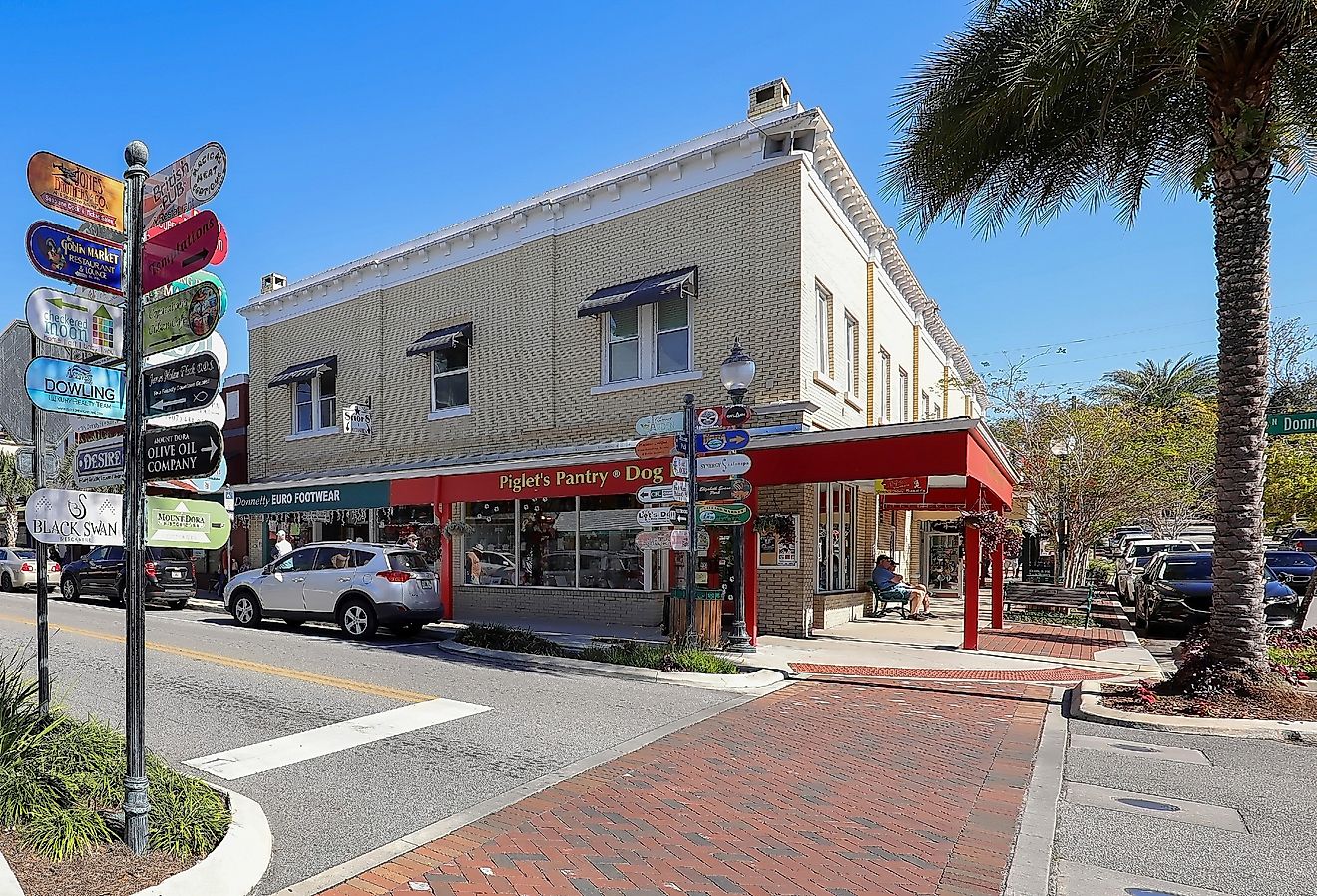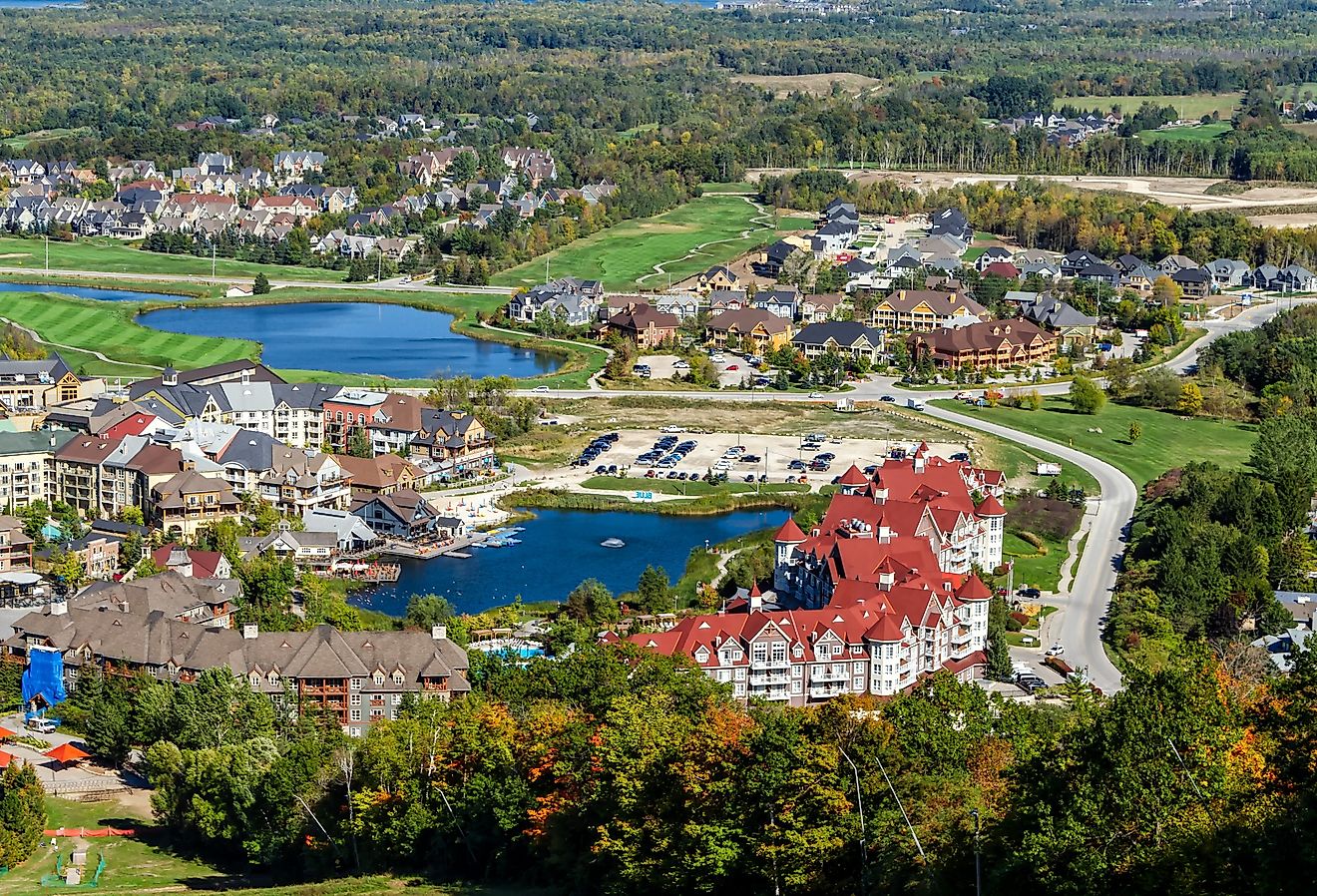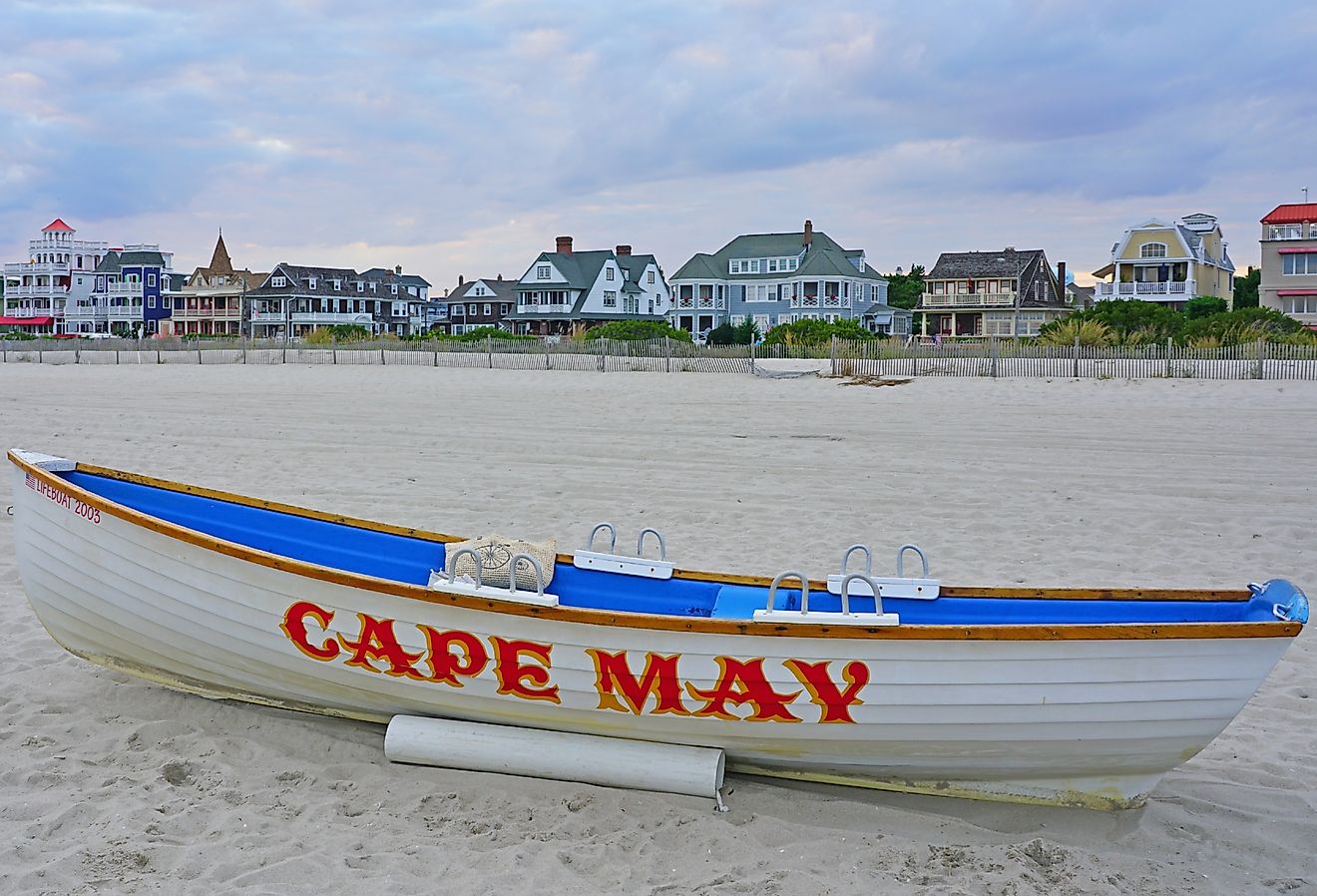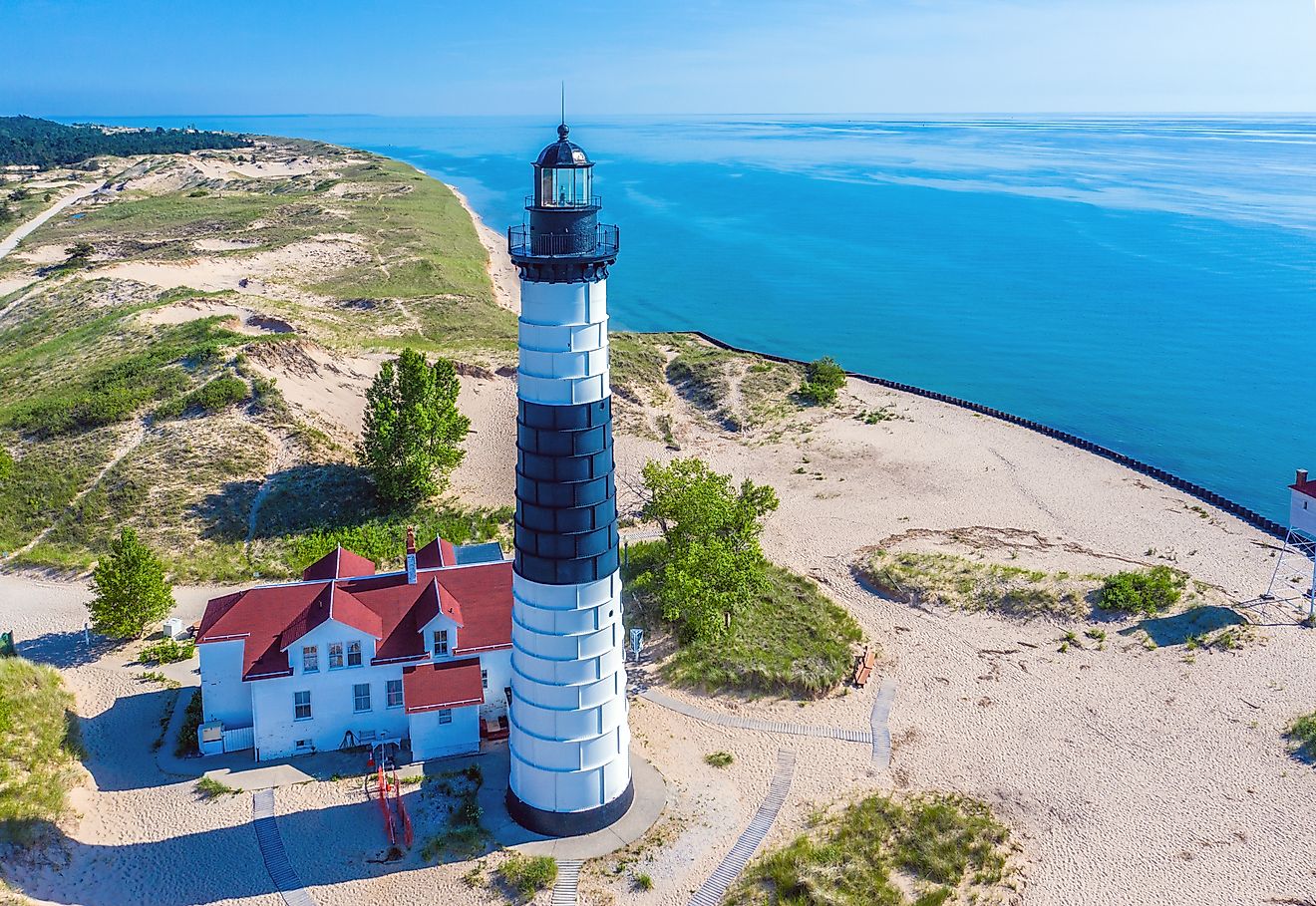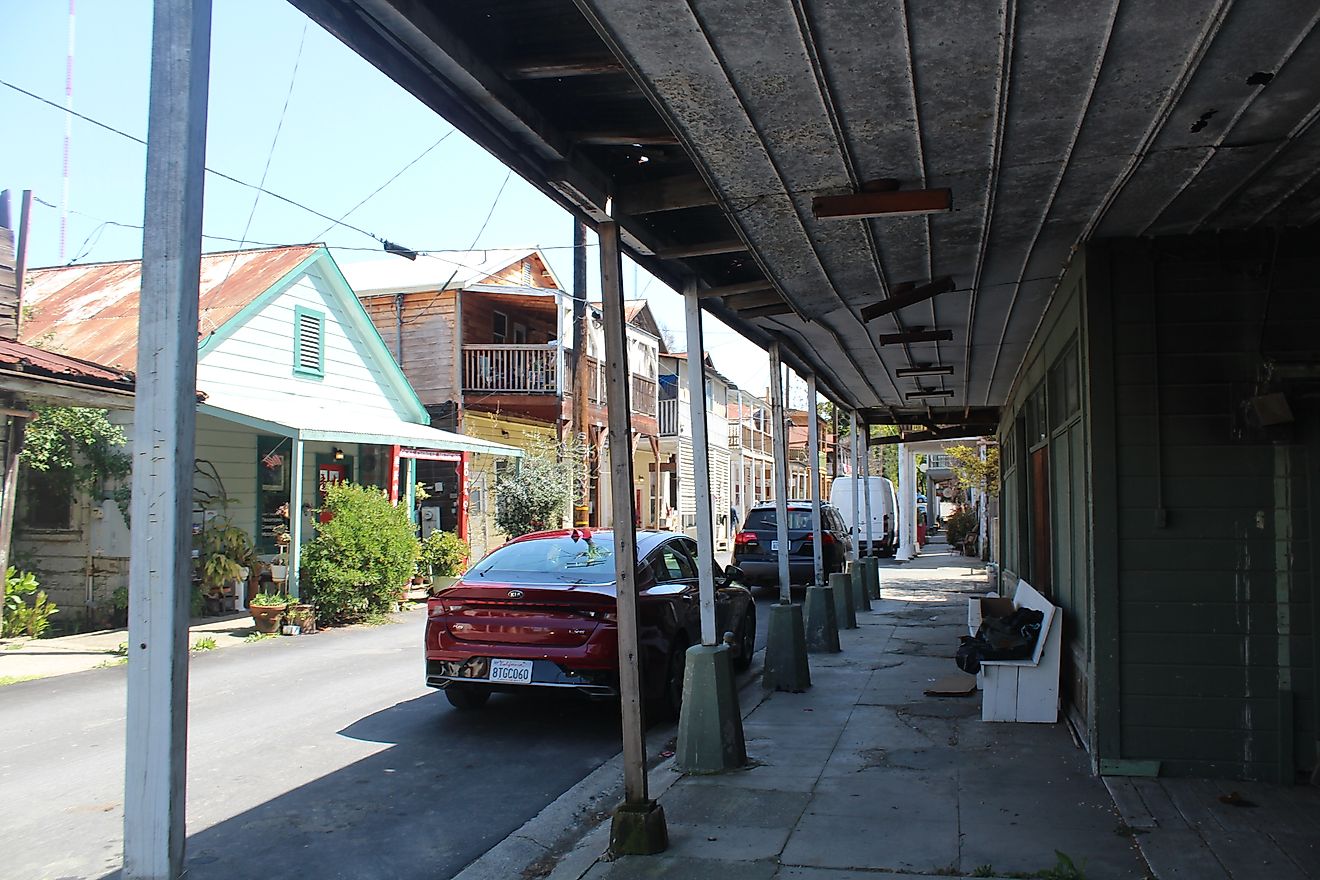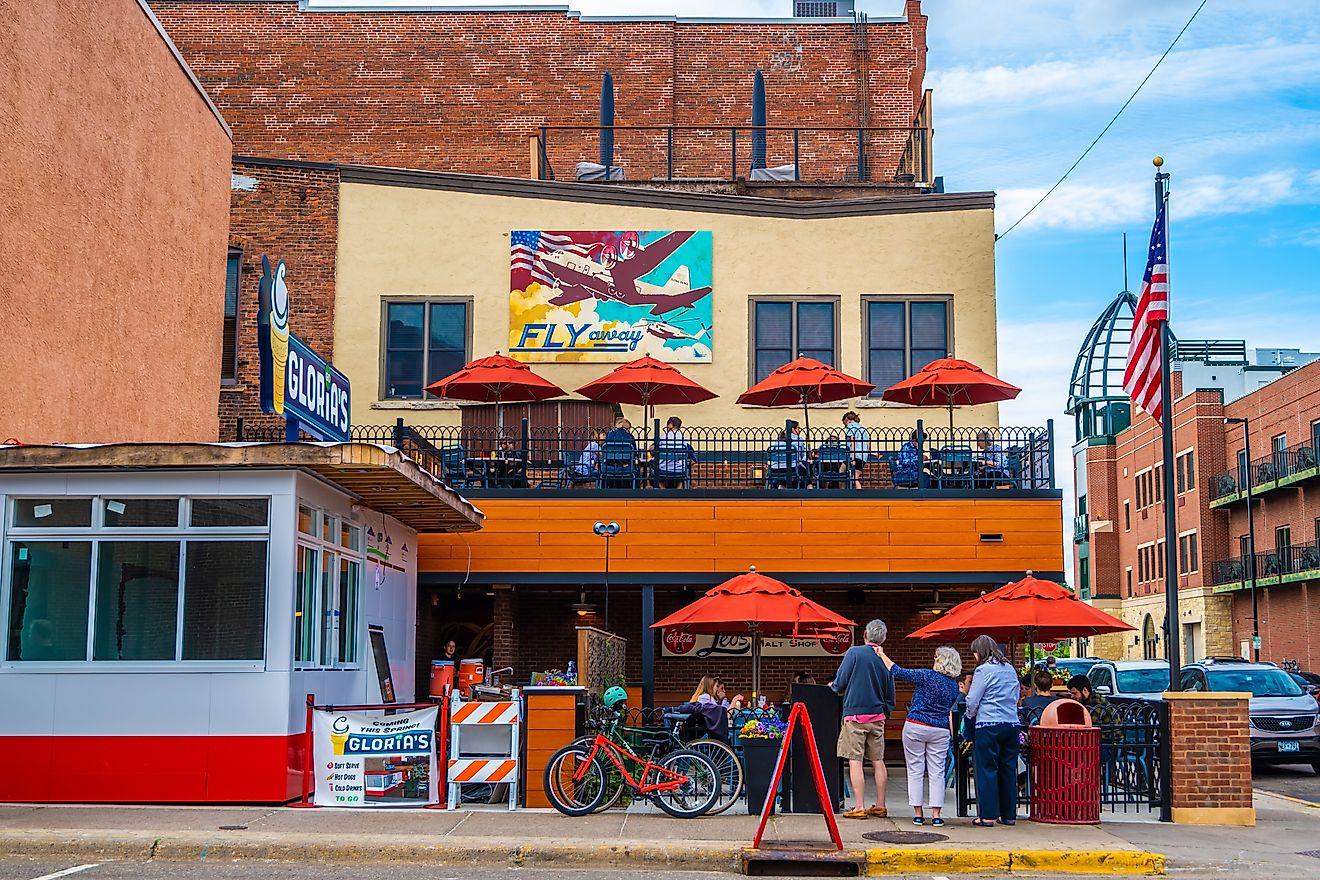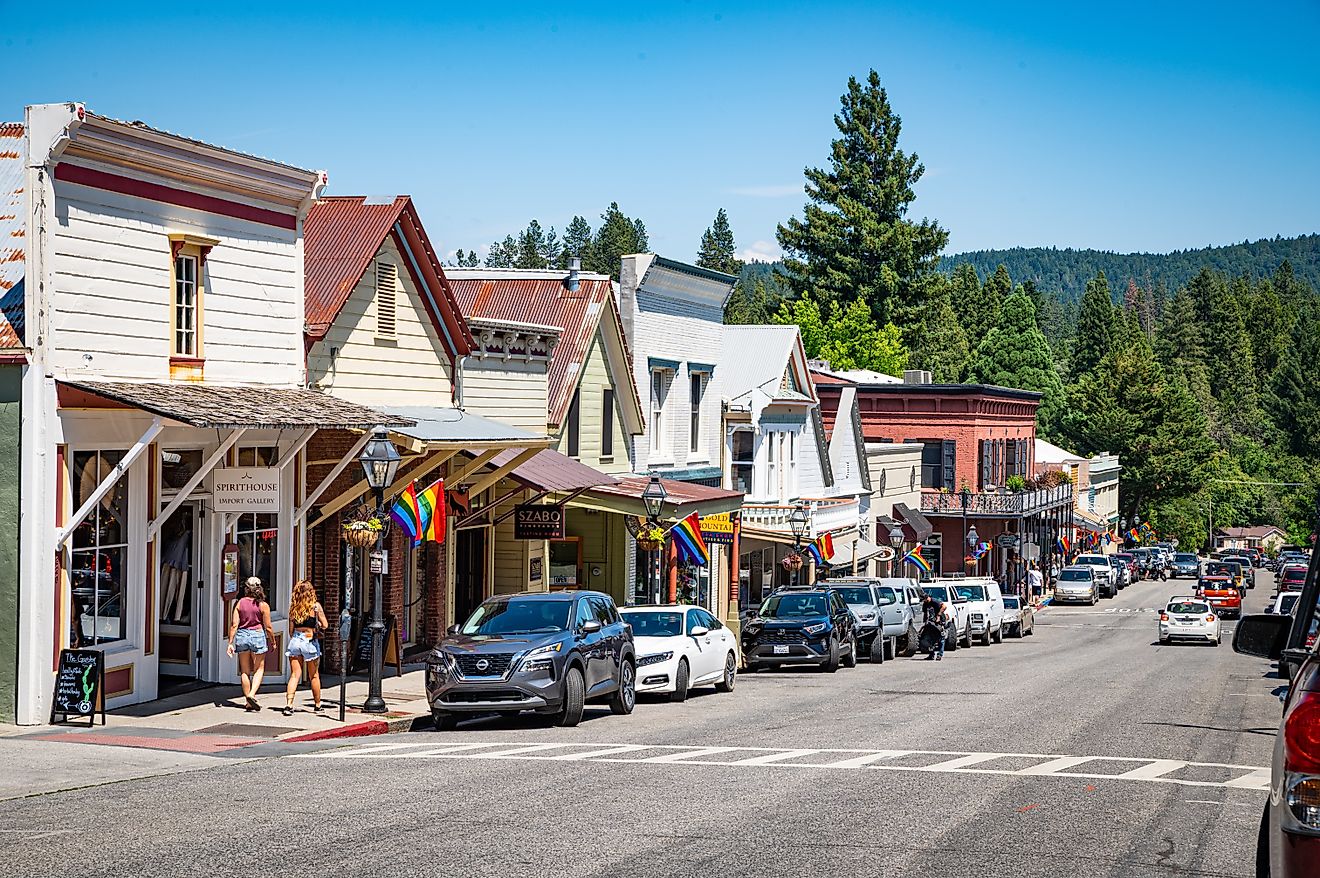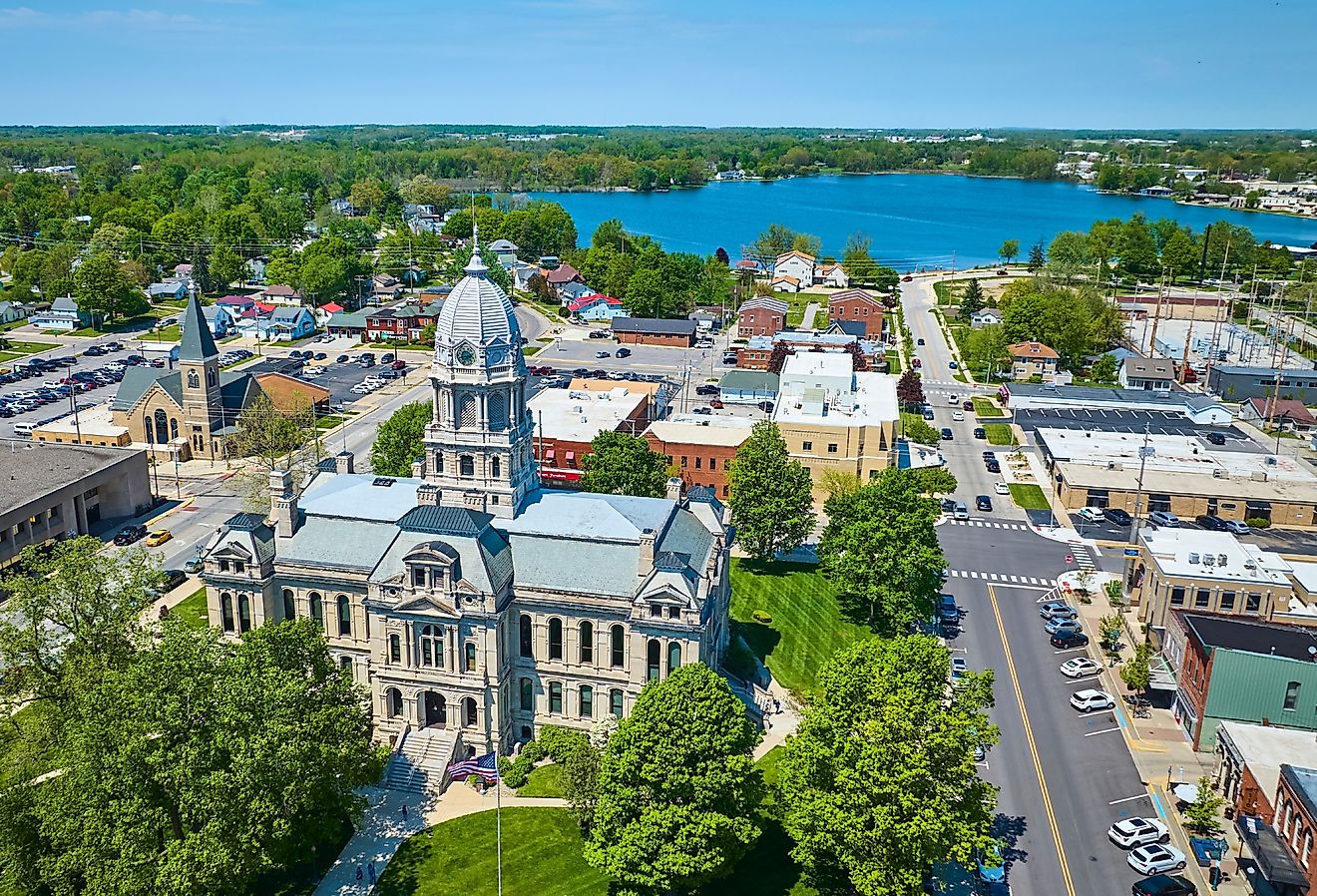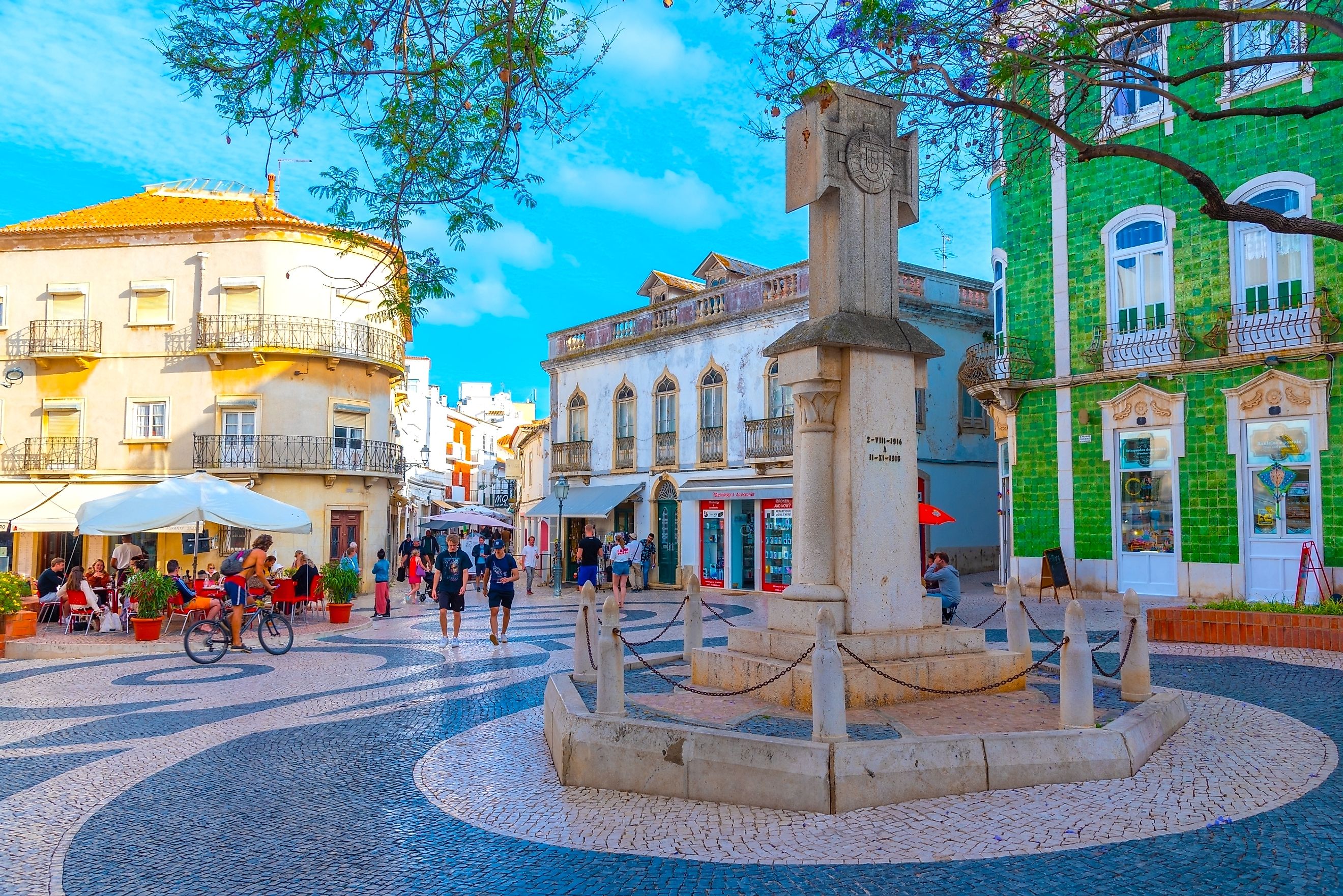
These Towns In Portugal Have The Best Main Streets
Portugal’s temperate climate, friendly people, and rich history are just a handful of reasons why this small European country (its population is just over 10 million) is a prime travel destination for North Americans. And while most who visit will spend much of their time visiting larger cities like Lisbon, the capital, and Porto, those curious enough to explore some of Portugal’s wonderful small towns are in for a treat.
Not only do these communities offer an authentic dose of Portuguese culture, they’re also extremely photogenic, boasting some of the prettiest main streets of any Mediterranean country. Full of history, charm, and local culture, check out these towns in Portugal that have the best main streets.
Tavira
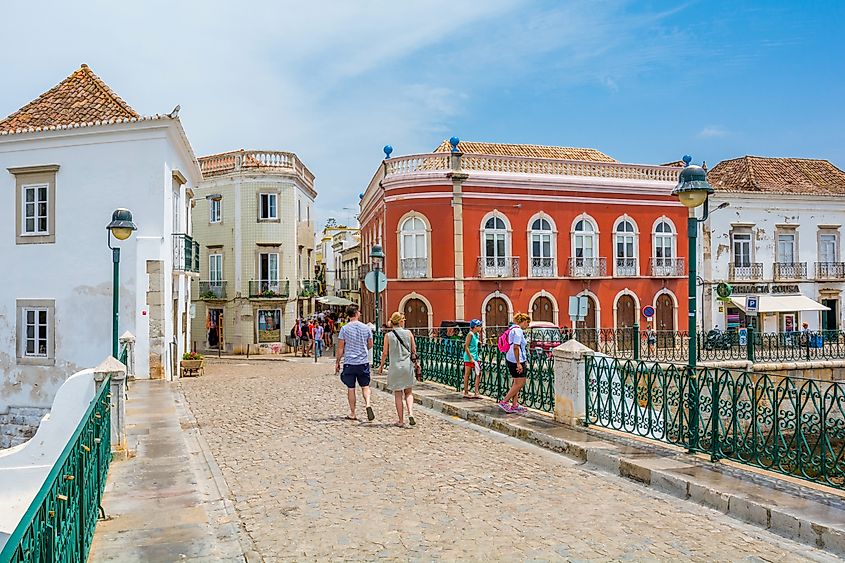
Founded in the 8th century, Tavira is located in Portugal’s beautiful Algarve region, about 18 miles east of Faro. Its main street, Rua da Liberdade, blends traditional Portuguese architecture with a handful of modern attractions, making it a popular tourist destination for holidaymakers and day trippers alike. Along this pretty street, you’ll find cafés serving delicious Portuguese custard pastries, pasteis de nata, as well as local shops selling crafts and souvenirs.
The historic Tavira Castle (Castelo de Tavira), which overlooks the town, is a must-visit. Built on the site of a fortress that existed 800 years before Christ, the current medieval structure is thought to have been built around 700AD and offers commanding views over Tavira’s main street and the town’s old bridge, constructed over the Gilão River in the 12th Century and still going strong.
Óbidos

Located 50 miles north of Lisbon, the Portuguese capital, pretty Óbidos has been proclaimed one of the “seven wonders of Portugal” and can trace its history back to 1148, with many of its earliest structures still intact. The best of them can be seen along the town’s main street, Rua Direita, a delightful narrow cobblestone street with whitewashed houses adorned with blue and yellow trim and limitless excuses to wander. The highlight is historic Óbidos Castle (Castelo de Óbidos), a well-preserved 12th-century fortress with a commanding view back along Rua Direita and the surrounding countryside.
You can also explore the old town walls, built around the same time as the castle, with almost a mile of which is walkable. Try to plan a visit for July in order to partake in the Óbidos Medieval Fair (Mercado Medieval Óbidos), a month-long celebration of the town’s rich history and culture, complete with a lively marketplace, music, performances, and traditional Portuguese foods.
Sintra
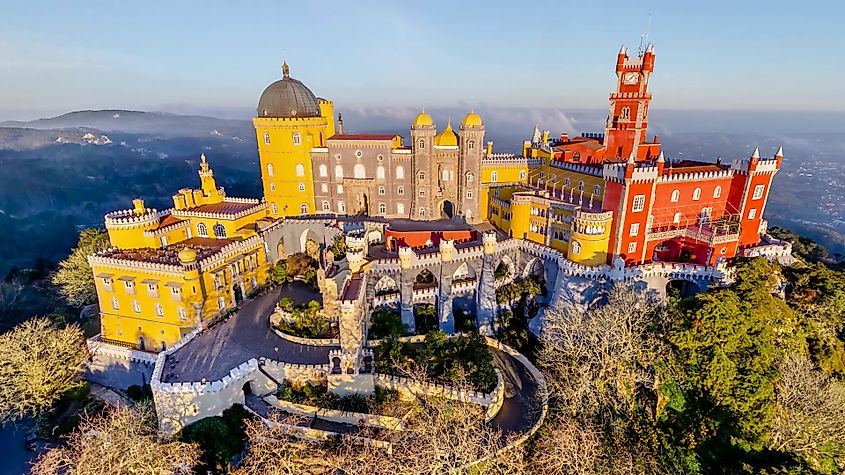
Sintra, one of Portugal’s best-known UNESCO World Heritage Sites, was founded in the 12th century and is located just 18 miles west of Lisbon, making it an ideal day trip for time-pressed travelers. Its main street, Rua das Padarias, is a picturesque thoroughfare filled with pastel-colored houses, charming bakeries, and historic shops selling everything from chic clothing to traditional crafts (so bring some spending money!). One of the most famous landmarks along Rua das Padarias is the impressive National Palace (the Palácio Nacional de Sintra), built in the 15th century and used as a royal residence right up to the late 19th century.
Another must-tour attraction is the Moorish Castle. Built in the 10th century, be sure to spend time walking along its old walls for superb views of Sintra. One of the most visited destinations in Portugal, Sintra is also the scene of the Festa de São Pedro each June, a fun-filled celebration of the town’s cultural and religious heritage. Rua das Padarias plays a central role in the festivities and is lined with food stalls, live music, and plenty of traditional dancing.
Lagos
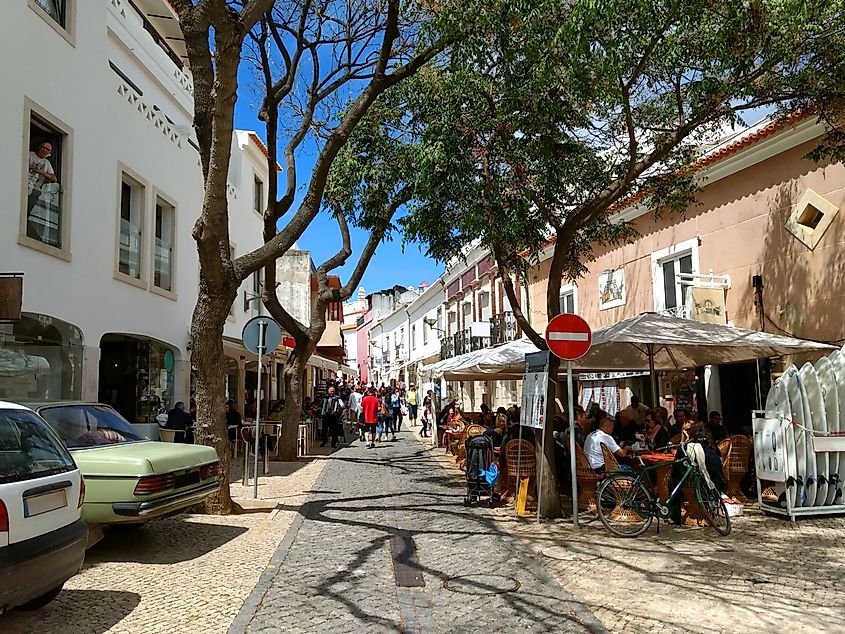
One of the oldest towns in Portugal, Lagos was founded in the 2nd century BC on Portugal’s southwestern coast, about 55 miles west of Faro. The town’s main street, Rua 25 de Abril, is a lively hub of activity filled with restaurants, cafés, bars, and locally-owned shops just waiting to be explored. In addition to its scenic coastal setting, Lagos has done a great job of preserving and showcasing its deep connection to the sea, including during the Age of Discoveries from the 1400s to 1600s. Much can be learned about this period of Portuguese history in the many museums and monuments found in and around the town’s main street. Be sure to stop in at the Posto de Turismo de Lagos, the local tourism office, for tips and info about other great things to do in Lagos.
From here, it’s also easy to access Lagos’ beautiful waterfront, where you can pick up a fun boat tour to explore nearby caves and beaches. Each year, Lagos celebrates the Festival dos Descobrimentos, a family-friendly event commemorating the town’s connection to Portugal’s seafaring past with parades, historical reenactments, and music.
Tomar
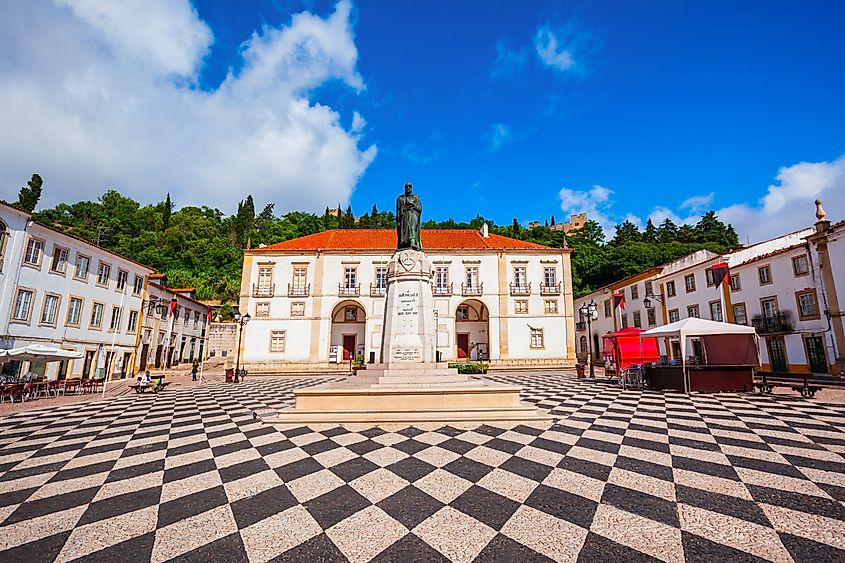
Founded in 1160 and famous for its connection to the Knights Templar, Tomar is located 80 miles north of Lisbon and is well worth getting to know. The town’s rich history is encapsulated by its spectacular main street, Rua Serpa Pinto, a charming thoroughfare with cobblestone pathways leading through Tomar’s well-preserved old town. Historical landmarks include the Convent of Christ (Convento de Cristo/Mosteiro de Cristo), a UNESCO World Heritage site that served as a stronghold of the Knights Templar in the 12th century (tours are available).
One of Tomar’s most important events is the Festa dos Tabuleiros. Held every four years (the next one is scheduled for 2027), it brings thousands of visitors to the town over a seven-day period that sees Rua Serpa Pinto festooned with flowers for the grand parade.
Estremoz
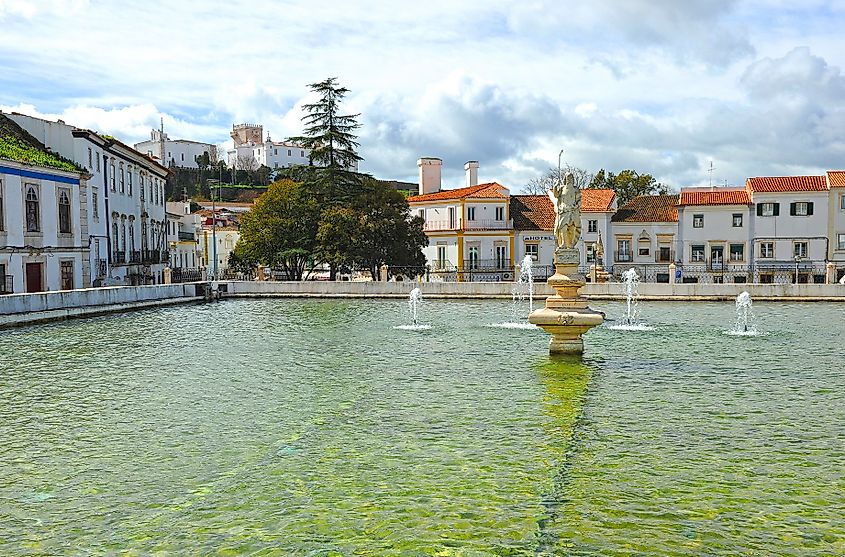
Located in the Alentejo region on the main driving route connecting Lisbon with Spain, Estremoz can trace its roots back to the 12th century and is famed for its marble quarries and well-preserved medieval architecture. The best of the town’s old buildings can be found along Rua 31 de Janeiro, the main street, a focal point for locals and visitors alike with its traditional Portuguese shops and market stalls. One of the main attractions here is the Tower of the Three Crowns (Torre das Três Coroas), a part of the historic Estremoz Castle, which has dominated the town since the 13th century.
Estremoz is famous for its weekly Saturday market. One of the largest in the region, this bustling market fills Rua 31 de Janeiro with vendors selling everything from fresh produce to handcrafted ceramics, including the famous Azulejo tiles, which make perfect souvenirs. Better still, try to time a visit to coincide with the Festival da Rainha in July, which celebrates the life of Queen Isabel of Portugal (1503 - 1539) with parades, concerts, and reenactments of events from her reign.
Monsaraz
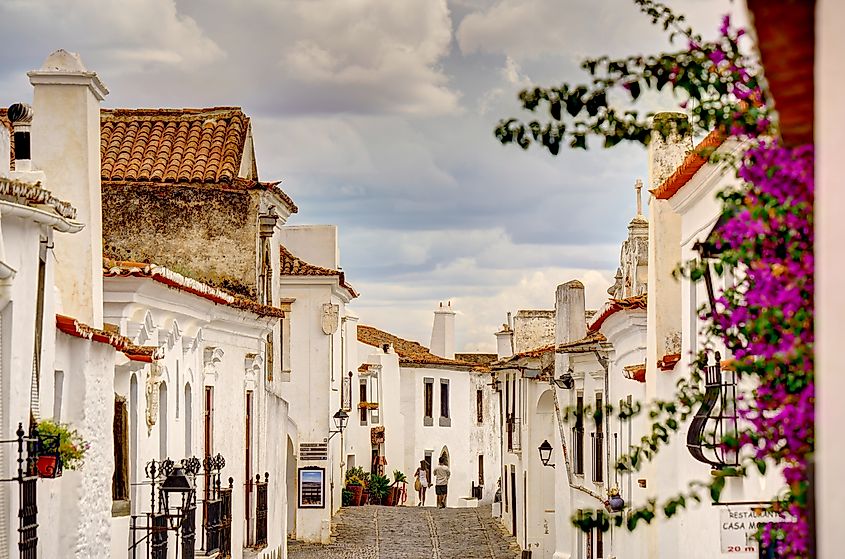
Monsaraz is a lovely medieval hilltop town established in the 1100s in the scenic Alentejo region close to the border with Spain. Its main street, Rua Direita, is a narrow, cobblestone thoroughfare lined with whitewashed houses and artisan shops that makes for a memorable photo. Adding to the allure, the town is encircled by well-preserved old walls built not long after the Knights Templar took over the village in the 12th century. The views from the walls over the surrounding plains and the Alqueva Dam and the largest artificial lake in Europe are simply breathtaking.
At the south end of Rua Direita stands the imposing Monsaraz Castle (Castelo de Monsaraz). Connected to the town walls, this spectacular fortress was completed in 1320 and is now a national monument (tours are available). Monsaraz is also well known for its cultural events, particularly the Cante Alentejano festivals celebrating traditional regional music, which fill the streets with local sounds and performances. An event that takes over much of Monsaraz’s main street and downtown district, the annual Feira de São João in June transforms Rua Direita into a colorful marketplace with food, crafts, and live entertainment.
The Final Word
Portugal’s small towns each offer a fascinating glimpse into the country’s rich history and vibrant local culture, especially along their main streets. From medieval castles to bustling regional marketplaces, these streets offer a chance to explore a mix of historical landmarks, local shops, and cultural events. Whether it’s the coastal charm of Cascais or the medieval intrigue of Tomar, these towns in Portugal have the best main streets for those seeking an authentic Portuguese experience that highlights the country’s diverse heritage.
